Solar eclipse of June 21, 2039
An annular solar eclipse will occur on June 21, 2039. A solar eclipse occurs when the Moon passes between Earth and the Sun, thereby totally or partly obscuring the image of the Sun for a viewer on Earth. An annular solar eclipse occurs when the Moon's apparent diameter is smaller than the Sun's, blocking most of the Sun's light and causing the Sun to look like an annulus (ring). An annular eclipse appears as a partial eclipse over a region of the Earth thousands of kilometres wide. This eclipse will start only a few hours after the northern solstice and most of the path will go across areas with midnight sun. For mainland Norway, Sweden and Belarus it will be the first central solar eclipse since June 1954.
| Solar eclipse of June 21, 2039 | |
|---|---|
 Map | |
| Type of eclipse | |
| Nature | Annular |
| Gamma | 0.8312 |
| Magnitude | 0.9454 |
| Maximum eclipse | |
| Duration | 245 sec (4 m 5 s) |
| Coordinates | 78.9°N 102.1°W |
| Max. width of band | 365 km (227 mi) |
| Times (UTC) | |
| Greatest eclipse | 17:12:54 |
| References | |
| Saros | 147 (24 of 80) |
| Catalog # (SE5000) | 9595 |
Images

Animated path
Related eclipses
Solar eclipses of 2036–2039
This eclipse is a member of a semester series. An eclipse in a semester series of solar eclipses repeats approximately every 177 days and 4 hours (a semester) at alternating nodes of the Moon's orbit.[1]
Note: Partial solar eclipses on February 27, 2036 and August 21, 2036 occur on the previod lunar year eclipse set.
| Solar eclipse series sets from 2036–2039 | ||||
|---|---|---|---|---|
| Ascending node | Descending node | |||
| 117 | July 23, 2036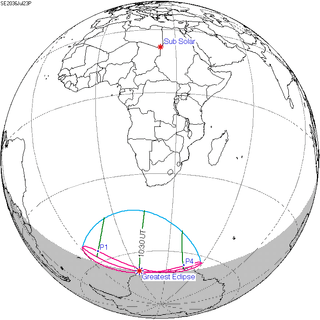 Partial |
122 | January 16, 2037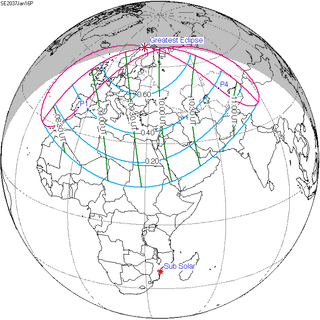 Partial | |
| 127 | July 13, 2037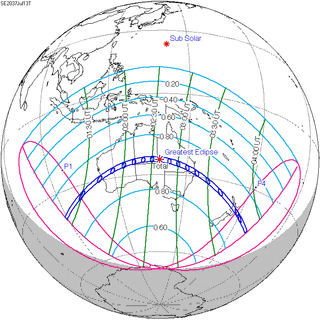 Total |
132 | January 5, 2038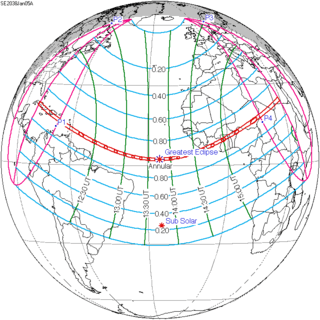 Annular | |
| 137 | July 2, 2038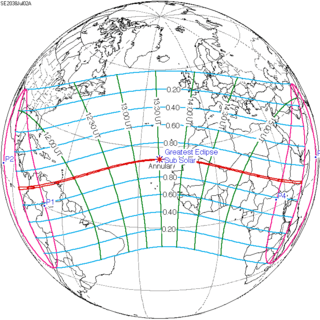 Annular |
142 | December 26, 2038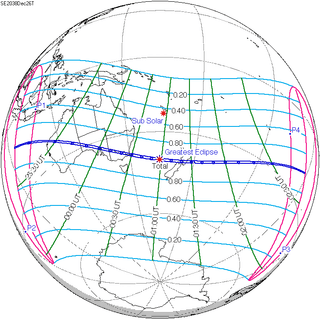 Total | |
| 147 | June 21, 2039 Annular |
152 | December 15, 2039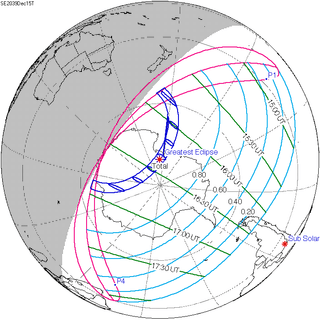 Total | |
Saros 147
Solar saros 147, repeating every about 18 years and 11 days, contains 80 events. The series started with a partial solar eclipse on October 12, 1624. It has annular eclipses from May 31, 2003, to July 31, 2706. There are no total eclipses in this series. The series ends at member 80 as a partial eclipse on February 24, 3049. The longest annular eclipse will be on November 21, 2291, at 9 minutes and 41 seconds.[2]
| Series members 17–27 occur between 1901 and 2100: | ||
|---|---|---|
| 17 | 18 | 19 |
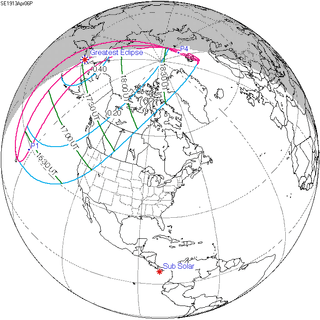 April 6, 1913 |
 April 18, 1931 |
 April 28, 1949 |
| 20 | 21 | 22 |
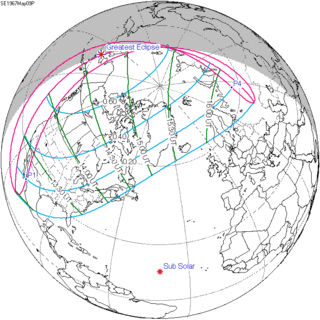 May 9, 1967 |
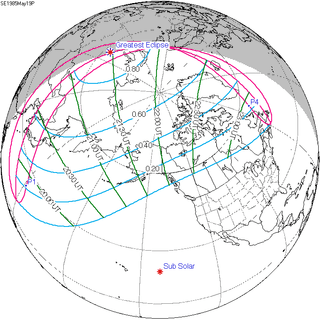 May 19, 1985 |
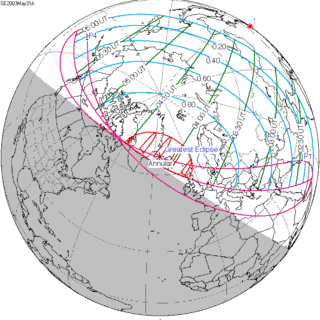 May 31, 2003 |
| 23 | 24 | 25 |
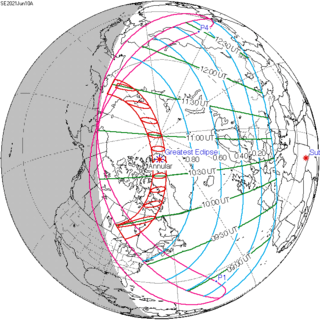 June 10, 2021 |
 June 21, 2039 |
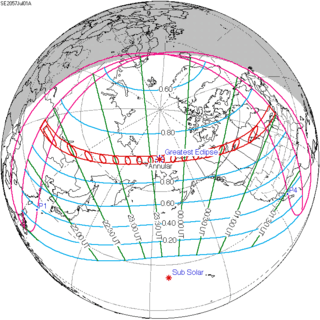 July 1, 2057 |
| 26 | 27 | |
 July 13, 2075 |
 July 23, 2093 | |
Metonic series
The metonic series repeats eclipses every 19 years (6939.69 days), lasting about 5 cycles. Eclipses occur in nearly the same calendar date. In addition, the octon subseries repeats 1/5 of that or every 3.8 years (1387.94 days). All eclipses in this table occur at the Moon's ascending node.
| 21 eclipse events between June 21, 1982, and June 21, 2058 | ||||
|---|---|---|---|---|
| June 21 | April 8–9 | January 26 | November 13–14 | September 1–2 |
| 107 | 109 | 111 | 113 | 115 |
| June 21, 1963 | April 9, 1967 | January 26, 1971 | November 14, 1974 | September 2, 1978 |
| 117 | 119 | 121 | 123 | 125 |
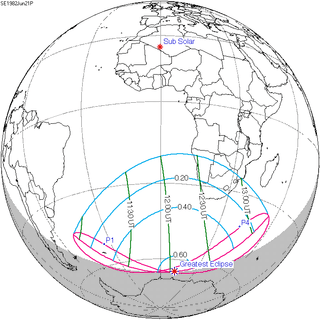 June 21, 1982 |
 April 9, 1986 |
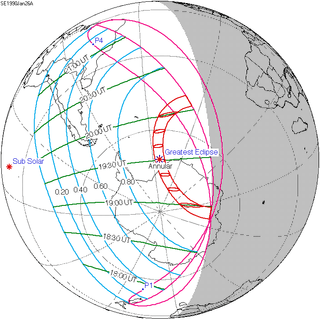 January 26, 1990 |
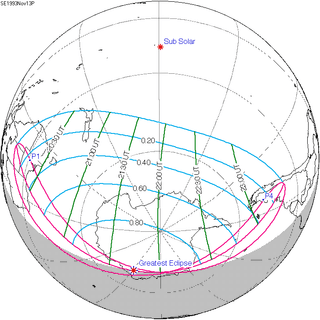 November 13, 1993 |
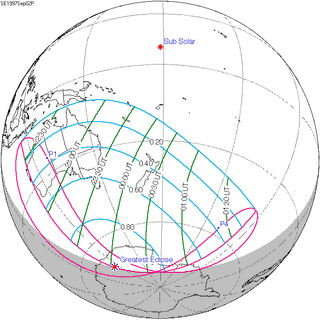 September 2, 1997 |
| 127 | 129 | 131 | 133 | 135 |
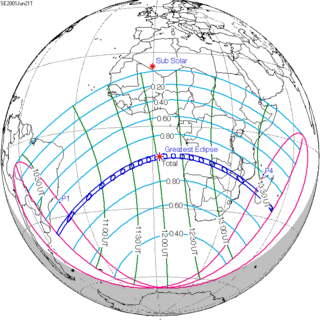 June 21, 2001 |
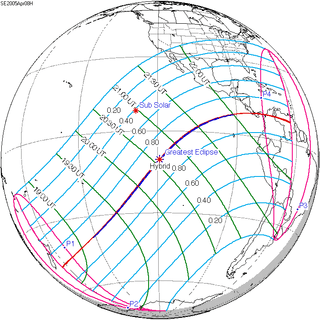 April 8, 2005 |
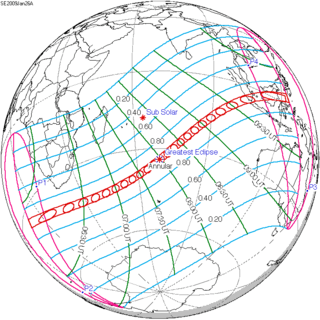 January 26, 2009 |
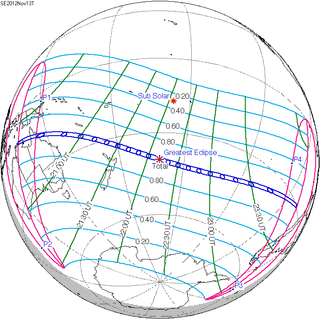 November 13, 2012 |
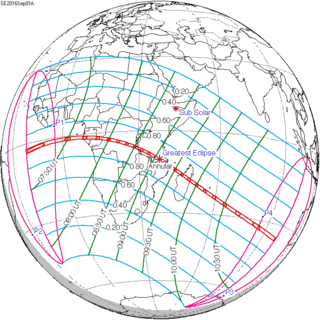 September 1, 2016 |
| 137 | 139 | 141 | 143 | 145 |
 June 21, 2020 |
 April 8, 2024 |
 January 26, 2028 |
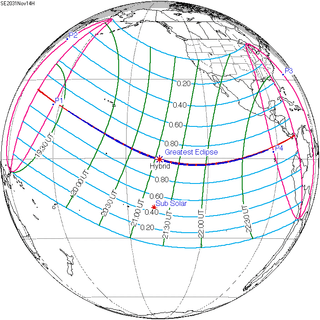 November 14, 2031 |
 September 2, 2035 |
| 147 | 149 | 151 | 153 | 155 |
 June 21, 2039 |
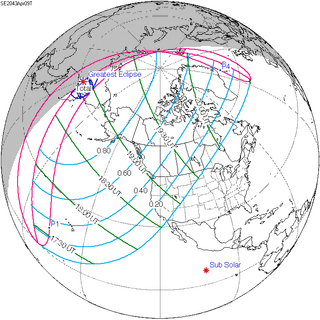 April 9, 2043 |
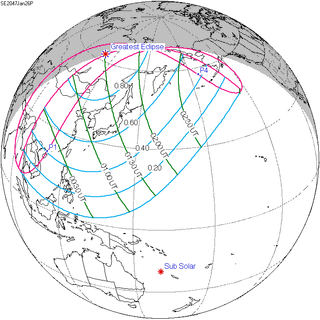 January 26, 2047 |
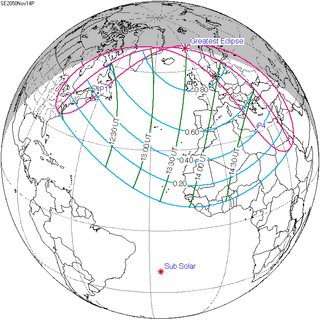 November 14, 2050 |
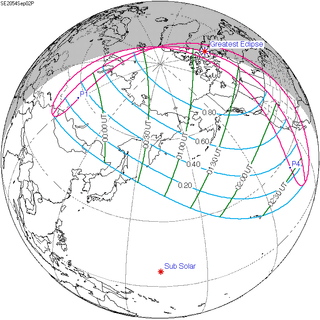 September 2, 2054 |
| 157 | ||||
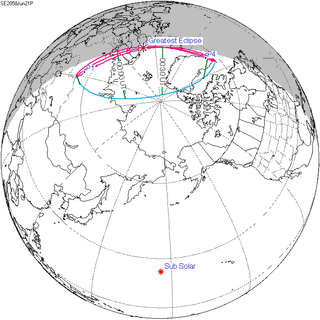 June 21, 2058 | ||||
References
- van Gent, R.H. "Solar- and Lunar-Eclipse Predictions from Antiquity to the Present". A Catalogue of Eclipse Cycles. Utrecht University. Retrieved 6 October 2018.
- Saros Series Catalog of Solar Eclipses NASA Eclipse Web Site.
| Wikimedia Commons has media related to Solar eclipse of 2039 June 21. |
.jpg)
